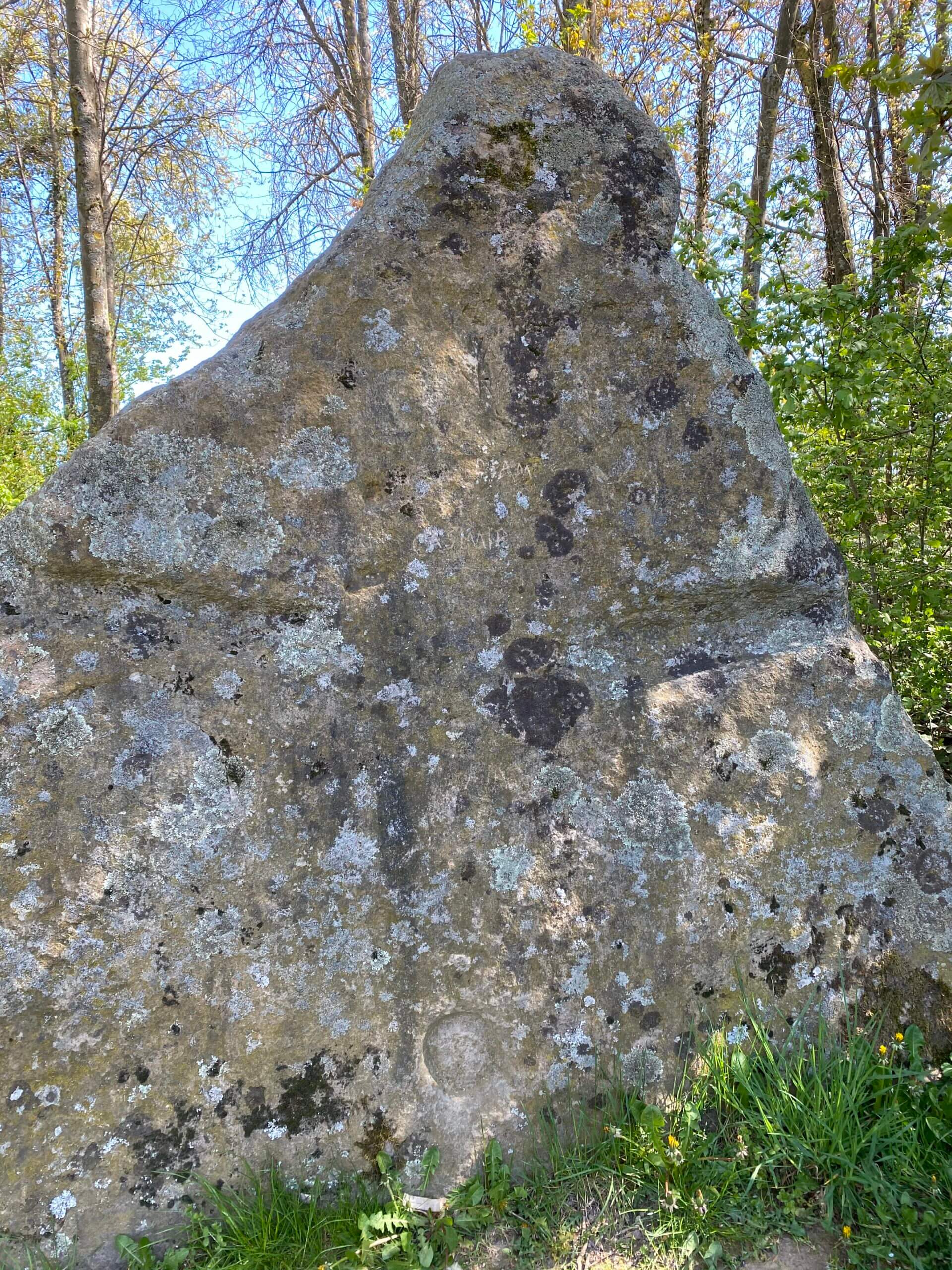Eselstratt, Trittenheim
Moselle, river kilometre 157
About 3,500 years ago, people of the megalithic culture are said to have erected the menhir (Celtic: long stone) here; on this narrow ridge flowed around by the Moselle. Prehistoric traces of carving show a circular depression, which is interpreted as a navel, and two wide grooves as arms. The whole stone is reminiscent of a broad figure with a small head and is interpreted as a matriarchal fertility cult in the Neolithic period. A mother deity was supposed to protect the earth and ensure good growth and flourishing. According to the beliefs of the Megalithic people, all life sprang from Mother Earth.
Today, the menhir stands on the boundary of the municipalities of Trittenheim, Köwerich and Klüsserath, on the old pilgrims’ path to Klausen.
The stone is popularly called “Eselstratt” because of its round recess. The associated legend: a Christian virgin escaped here with her donkey while fleeing from a pagan knight; by a courageous leap into the valley. The hoofprint of the donkey remained behind. The knight is said to have converted to Christianity at the sight of the miracle. (Source: Wikipedia))
